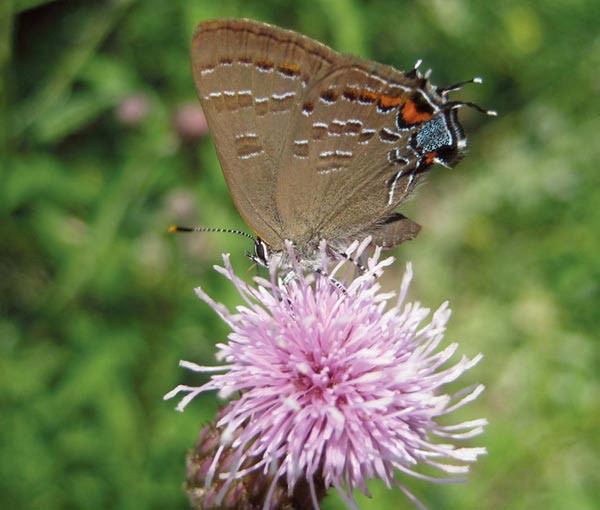
Climate change is affecting a wide range of wildlife, from plants and bees to birds and trees. A new study led by biologists at Boston University adds butterflies to the list, finding that butterflies emerge earlier in warmer years.
The researchers focused on the flight periods of 10 species of butterflies in the elfin and hairstreak families, using museum records and 23 years of data collected by members of the Massachusetts Butterfly Club. “We picked those species because they’re common and relatively easy to identify by local experts,” said Caroline Polgar, a postdoctoral researcher at BU. “They’re also short-lived species who only fly for two or three weeks. We felt we would be better able to detect a shift in emergence times with species that have a short flight window.”
They found that when average temperatures were higher than normal, the butterflies came out earlier. Elfins, which fly in late spring, emerged 4.8 days earlier for each degree Celsius, while the summerflying hairstreaks emerged 2.6 days earlier.
Polgar explained the difference between the spring and summer species. “Spring temperature changes are usually more dramatic, sometimes going from very cold to warm, whereas in summer it’s already warm so the temperature differences aren’t so dramatic. We see the same thing with plants. Spring flowering species respond more to temperature changes than summer flowering species.”
The temperature period the researchers examined was the two months before the butterflies were due to emerge. If it was warmer than average in March and April, for instance, the elfins were likely to emerge early. Polgar said that the change over time was significant for some species and less so for others, “but should temperatures continue to warm, it is extremely likely there will be a significant change in emergence times for all species.”
The good news, she added, is that butterflies appear to be responding to temperature at a rate similar to that of plants. Because of the close relationship between them, if one responded differently there could be “a catastrophic timing difference,” meaning that the leaves or flowers may not be available when the butterflies or their larvae need them.
That is a concern the researchers raise with birds. Studies have shown that bird arrival times in spring are much less responsive to local temperatures than plant and insect populations. Some bird species, especially those that migrate relatively short distances, have been arriving earlier in the spring, but others have not perhaps because they take cues for their longer migration routes from photoperiod (the number of hours of light in a 24-hour period) as well as temperature. That could raise the specter of ecological mismatches as migratory birds arrive after the peak abundance of their insect food.


Discussion *